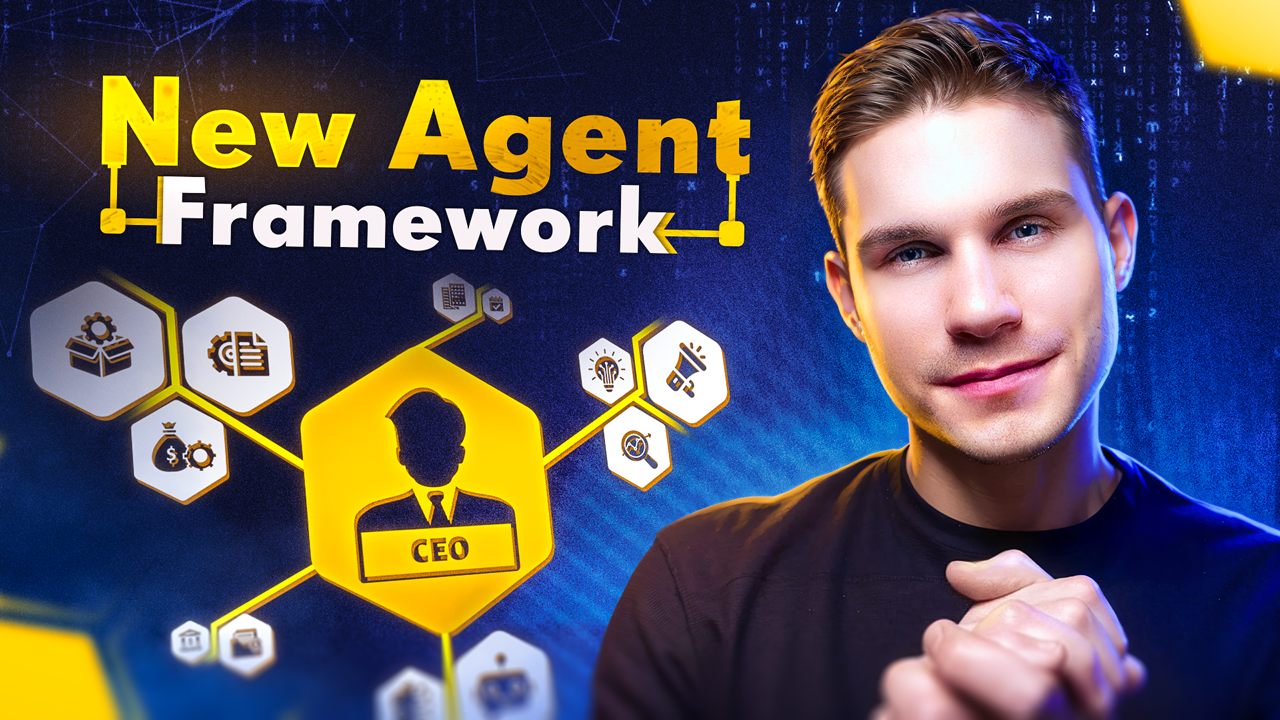Agency Swarm is an open-source agent orchestration framework designed to automate and streamline AI development processes. Leveraging the power of the OpenAI Assistants API, it enables the creation of a collaborative swarm of agents (Agencies), each with distinct roles and capabilities. This framework aims to replace traditional AI development methodologies with a more dynamic, flexible, and efficient agent-based system.
- Customizable Agent Roles: Define roles like CEO, virtual assistant, developer, etc., and customize their functionalities with Assistants API.
- Full Control Over Prompts: Avoid conflicts and restrictions of pre-defined prompts, allowing full customization.
- Tool Creation: Tools within Agency Swarm are created using Instructor, which provides a convenient interface and automatic type validation.
- Efficient Communication: Agents communicate through a specially designed "send message" tool based on their own descriptions.
- State Management: Agency Swarm efficiently manages the state of your assistants on OpenAI, maintaining it in a special
settings.jsonfile.
pip install git+https://github.com/VRSEN/agency-swarm.git- Set Your OpenAI Key:
from agency_swarm import set_openai_key
set_openai_key("YOUR_API_KEY")- Create Tools: Define your custom tools with Instructor:
from agency_swarm.tools import BaseTool
from pydantic import Field
class MyCustomTool(BaseTool):
"""
A brief description of what the custom tool does.
The docstring should clearly explain the tool's purpose and functionality.
"""
# Define the fields with descriptions using Pydantic Field
example_field: str = Field(
..., description="Description of the example field, explaining its purpose and usage."
)
# Additional fields as required
# ...
def run(self):
"""
The implementation of the run method, where the tool's main functionality is executed.
This method should utilize the fields defined above to perform its task.
Doc string description is not required for this method.
"""
# Your custom tool logic goes here
do_something(self.example_field)
# Return the result of the tool's operation
return "Result of MyCustomTool operation"NEW: Import in 1 line of code from Langchain
from langchain.tools import YouTubeSearchTool
from agency_swarm.tools import ToolFactory
LangchainTool = ToolFactory.from_langchain_tool(YouTubeSearchTool)or
from langchain.agents import load_tools
tools = load_tools(
["arxiv", "human"],
)
tools = ToolFactory.from_langchain_tools(tools)- Define Agent Roles: Start by defining the roles of your agents. For example, a CEO agent for managing tasks and a developer agent for executing tasks.
from agency_swarm import Agent
ceo = Agent(name="CEO",
description="Responsible for client communication, task planning and management.",
instructions="You must converse with other agents to ensure complete task execution.", # can be a file like ./instructions.md
files_folder=None,
tools=[MyCustomTool, LangchainTool])- Define Agency Communication Flows: Establish how your agents will communicate with each other.
from agency_swarm import Agency
agency = Agency([
ceo, # CEO will be the entry point for communication with the user
[ceo, dev], # CEO can initiate communication with Developer
[ceo, va], # CEO can initiate communication with Virtual Assistant
[dev, va] # Developer can initiate communication with Virtual Assistant
], shared_instructions='agency_manifesto.md') # shared instructions for all agentsIn Agency Swarm, communication flows are directional, meaning they are established from left to right in the agency_chart definition. For instance, in the example above, the CEO can initiate a chat with the developer (dev), and the developer can respond in this chat. However, the developer cannot initiate a chat with the CEO. The developer can initiate a chat with the virtual assistant (va) and assign new tasks.
- Run Demo: Run the demo to see your agents in action!
agency.demo_gradio(height=900)Terminal version:
agency.run_demo()- Get Completion: Get completion from the agency:
completion_output = agency.get_completion("Please create a new website for our client.", yield_messages=False)This CLI command simplifies the process of creating a structured environment for each agent.
agency-swarm create-agent-template --name "AgentName" --description "Agent Description" [--path "/path/to/directory"] [--use_txt]When you run the create-agent-template command, it creates the following folder structure for your agent:
/your-specified-path/
│
├── agency_manifesto.md or .txt # Agency's guiding principles (created if not exists)
└── agent_name/ # Directory for the specific agent
├── agent_name.py # The main agent class file
├── __init__.py # Initializes the agent folder as a Python package
├── instructions.md or .txt # Instruction document for the agent
├── tools.py # Tools specific to the agent
├── files/ # Directory for additional resources
This structure ensures that each agent has its dedicated space with all necessary files to start working on its specific tasks. The tools.py can be customized to include tools and functionalities specific to the agent's role.
- Asynchronous communication and task handling.
- Creation of agencies that can autonomously create other agencies.
- Inter-agency communication for a self-expanding system.
We welcome contributions to Agency Swarm! Please feel free to submit issues, pull requests, and suggestions to our GitHub repository.
Agency Swarm is open-source and licensed under MIT.
If you require assistance in creating custom agent swarms or have any specific queries related to Agency Swarm, feel free to reach out through my website: vrsen.ai


